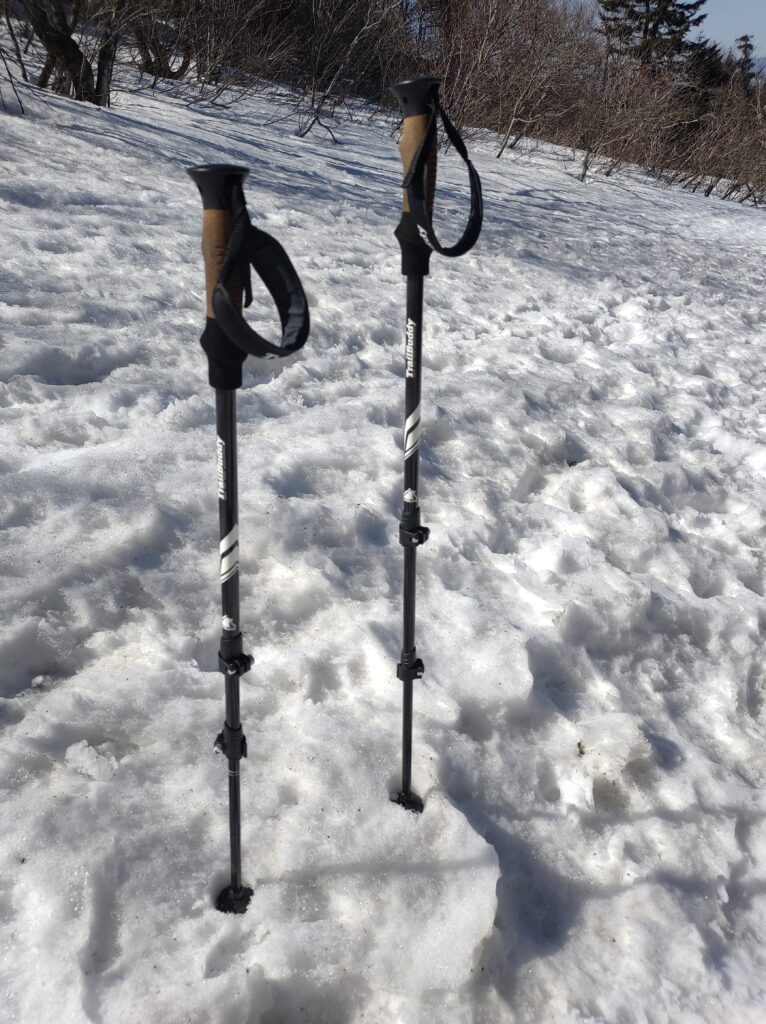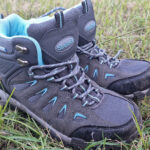If you are a hiking enthusiast, you might have heard of trekking poles and wondered if they are worth the investment. Trekking poles are long, lightweight poles you hold in your hands and use to support yourself while walking on uneven terrain. They can help you improve your balance, reduce the impact on your joints, and increase your speed and efficiency. This post will explain how trekking poles work, what benefits they offer, and how to choose the best ones for your needs.
How do trekking poles work?
Trekking poles work by transferring some of the weight from your legs to your arms, reducing stress on your knees, ankles, and feet. They also help you maintain a steady rhythm and pace, boosting your endurance and performance. Trekking poles can also help you navigate challenging terrain like steep slopes, rocky paths, or slippery surfaces. They can provide extra stability, traction, and leverage to push yourself up or down. Additionally, you can use trekking poles for other purposes, such as clearing obstacles, testing the depth of water or snow, or setting up a shelter.
What benefits do trekking poles offer?
Trekking poles offer many benefits for hikers of all levels and abilities. Some of the main advantages are:
They reduce the risk of injury and fatigue. By using trekking poles, you can lower the impact on your lower body by up to 25%, according to some studies. This can prevent or alleviate common hiking injuries, such as knee pain, ankle sprains, or blisters. It can also help you conserve energy and avoid muscle soreness.
They improve your posture and breathing. By using trekking poles, you can keep your spine aligned and your chest open, which improves your posture and allows you to breathe more deeply and efficiently. A better posture can enhance oxygen intake and circulation, improving overall health and well-being.
They increase your speed and distance. Trekking poles can increase your stride length and frequency, improving your speed and distance. You can also cover more ground with less effort as you use your upper and lower body muscles. This can help you reach your hiking goals faster and easier.
They add fun and variety to your hiking experience. Using trekking poles, you can explore new trails and terrains that might otherwise be too difficult or dangerous. You can also challenge yourself by adjusting the length and angle of your poles to suit different situations. You can also enjoy the feeling of using your whole body to move forward and the satisfaction of overcoming obstacles.
How to choose the best trekking poles for your needs?
Trekking poles come in different shapes, sizes, materials, and features. To choose the best ones for your needs, you should consider the following factors:
Check out TrailBuddy Trekking Poles (#Ad Amazon)
NOTE: As an Amazon Associate this site earns from qualifying purchases.
The length of the poles. The ideal length of your trekking poles depends on your height and personal preference. A general rule of thumb is that the tips should touch the ground when you hold the poles with your elbows bent at 90 degrees. You can also use this formula: Your height (in centimeters) x 0.68 = Your pole length (in centimeters). Some poles are adjustable, which allows you to change the length depending on the terrain or your preference.
The weight of the poles. The weight of your trekking poles affects how easy they are to carry and use. Lighter poles are more comfortable and convenient, but heavier ones might need to be more durable and stable. The weight of the poles depends on the material used to make them, such as aluminum, carbon fiber, or wood.
The grip of the poles. The grip of your trekking poles affects how comfortable they are to hold and how well they prevent slipping or blistering. The grip of the poles can be of different materials, such as rubber, cork, foam, or plastic. Some grips also have straps or ergonomic shapes to enhance comfort and security.
The tip of the poles. The tip of your trekking poles affects how well they penetrate and grip the ground. The tip of the poles can be of different materials, such as steel, carbide, or rubber. Some tips also have baskets or spikes to improve traction or prevent sinking on soft surfaces.
Conclusion
Trekking poles are an excellent accessory for hikers who want to improve their performance, safety, and enjoyment while exploring nature. Trekking poles can help you reduce the impact on your joints, improve your balance and posture, increase your speed and distance, and add fun and variety to your hiking experience. To choose the best trekking poles, consider length, weight, grip, and tip factors.
Let us know if this post has helped you understand why trekking poles should be on your hiking list. If you have any questions or comments, please share them below. Happy hiking!
Next: The 10 Hiking Essentials you Need Before the Trail – (gotravelhiking.com)





